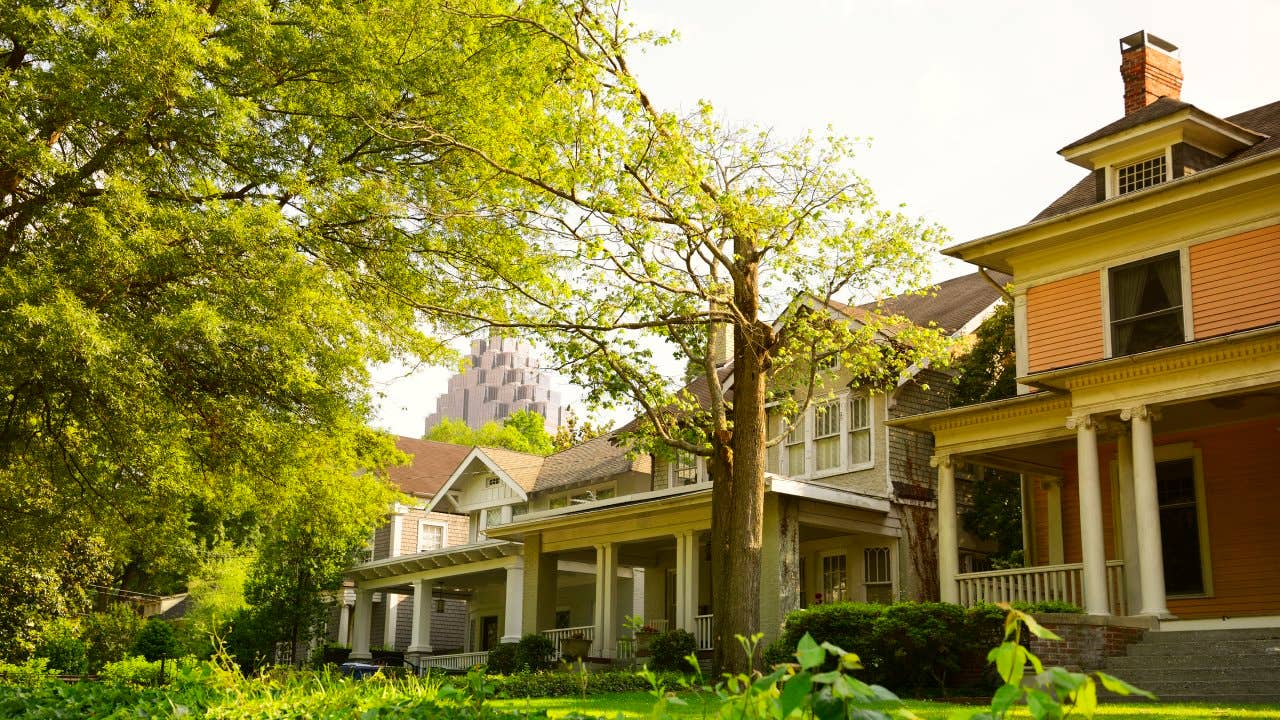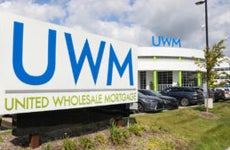Leading lenders roll out 1% down payment mortgages

The Bankrate promise
At Bankrate we strive to help you make smarter financial decisions. While we adhere to strict , this post may contain references to products from our partners. Here's an explanation for .
As affordability challenges conspire to keep would-be buyers out of the housing market, the nation’s two largest mortgage lenders have rolled out programs that allow borrowers with modest incomes to qualify for a loan with just 1 percent down.
Rocket Mortgage, the largest lender in the U.S. in 2022, announced its ONE+ program this week. United Wholesale Mortgage, the No. 2 lender, launched its Conventional 1% Down loans in April — then made them significantly more generous following Rocket’s announcement.
The rival programs piggyback off of Fannie Mae’s HomeReady mortgages and Freddie Mac’s Home Possible loans. Those initiatives allow borrowers who make less than 80 percent of their neighborhoods’ median income to obtain a conventional loan with just 3 percent down.
Both programs come at a time when home prices remain near record highs and mortgage rates are more than double what they were two years ago.
“With affordability being tougher, people are getting boxed out,” says Bill Banfield, executive vice president of Capital Markets at Rocket Mortgage. “Free money helps people want to buy a home.”
How the 1% mortgages work
To make 1 percent down a reality, both lenders cover 2 percent of the 3 percent down payment needed to obtain a HomeReady or Home Possible mortgage. The borrower supplies the remaining 1 percent.
Rocket offers this scenario as an illustration: A buyer of a $250,000 home with a HomeReady or Home Possible mortgage needs at least 3 percent down, or $7,500. Under its new program, Rocket covers $5,000, or 2 percent of that down payment, through a grant. The borrower then needs to put down just $2,500, or 1 percent.
Rocket’s program also covers private mortgage insurance (PMI) at no cost to the borrower. Typically, lenders require borrowers to pay these insurance premiums if their down payment is less than 20 percent. On a $242,500 loan, those premiums can run as much as $245 a month, according to Rocket.
ONE+ is available to first-time and repeat homebuyers, and there are no limits on assets, just income (more on that below).
United Wholesale Mortgage’s program is similar, following the same guidelines as HomeReady and Home Possible. The lender pays 2 percent of the purchase price, up to $4,000. That means the down payment benefit maxes out at $200,000; a borrower who takes a $400,000 loan under the program would get 1 percent of the down payment from United Wholesale Mortgage, and need to come up with 2 percent.
When United announced its program in April, the down payment assistance was limited to borrowers making less than half of area median income. After taking criticism on social media — and after Rocket rolled out its more generous income limits — the lender boosted its income limit to 80 percent.
What are the income limits?
To qualify for the 1 percent down programs — or any HomeReady or HomePossible loan — you can’t make more than 80 percent of the median income in the area where you’re buying. Those figures vary widely throughout the U.S. A few examples of the 80 percent limit:
| Atlanta | No more than $76,560 |
|---|---|
| Chicago | No more than $84,560 |
| Dallas | No more than $76,480 |
| New York City | No more than $90,080 |
| San Francisco | No more than $120,880 |
To see income limits in your area, enter an address into this map on Fannie Mae’s website.
Is there a catch?
These programs are a sweet deal for borrowers — so much so that there’s no guarantee the terms will stay the same, as evidenced by United Wholesale Mortgage’s decision to boost income limits.
What’s more, the down payment assistance is so generous that the nation’s two largest lenders could decide to pull the plug.
“Some of the features on this are costly for the lender,” says Rocket’s Banfield. “We’ll have to see how it all plays out.”
Another risk for borrowers: They could find themselves owing more than their homes are worth. Median home prices shrank 1.7 percent from April 2022 to April 2023, and home values could keep declining. For homebuyers who put just 3 percent down, a 5 percent decline in local home prices could put them underwater.
The Great Recession infamously played up the dangers of buying with little equity — but it’s worth pointing out that the mortgage market and housing sector are on much firmer footing now than they were 15 years ago. What’s more, borrowers still must qualify based on such factors as debt-to-income (DTI) ratio.
“There’s no stretching the underwriting,” says Banfield.
More lenders are getting creative
In another nod to the challenges facing buyers in a still-expensive market, Movement Mortgage this month announced it’s now allowing FHA borrowers to take out a 10-year second mortgage to finance the 3.5 percent down payment required for FHA loans. In effect, this eliminates the need for borrowers to put down any money upfront. To qualify, you must have a credit score of 620 or higher.
That offer is just one way lenders are responding to the one-two punch of an affordability squeeze and a sharp slowdown in mortgage applications since 2021. Lenders have been rolling out all manner of mortgage promotions, including rate buydowns paid for by the seller and discounts on future refinances.
In another variation on the theme, Rocket earlier this year unveiled a new credit card that allows homebuyers to earn up to $8,000 towards closing costs and a down payment. The Rocket Visa Signature Card offers a generous 5 percent back on all purchases, up to the limit — with the stipulation that the rewards are worth full value only if you ultimately get your home loan from Rocket Mortgage.
Other low-down payment mortgage options
Mortgage lenders and regulators recognize that down payments are one of the primary obstacles to homeownership, so there are several low- and no-down payment loan options. Loans backed by the U.S. Department of Veterans Affairs (VA), for instance, don’t require a down payment.
Aside from HomeReady and Home Possible conventional loans, here are other options for buyers looking to make low down payments:
- FHA loans: Insured by the Federal Housing Administration (FHA), FHA loans allow borrowers to put down just 3.5 percent with a credit score of 580 or higher, or at least 10 percent with a score as low as 500. However, FHA borrowers with less than 20 percent down have to pay FHA mortgage insurance premiums (MIP) for the life of the loan.
- USDA and VA loans: USDA and VA loans don’t require any down payment, but they’re only for specific types of borrowers: USDA loans for borrowers in certain rural areas and VA loans for active-duty service members, veterans and surviving spouses. Neither charge mortgage insurance, but USDA loans come with guarantee fees and VA loans come with a funding fee.
Related Articles



